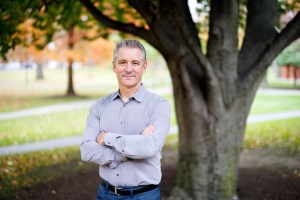The next big thing in mining the genome
Scientists develop simpler tool for finding disease genes and spotting genetic variation
About 99.9 percent of the 3.1 billion base pairs in the human genome are the same from person to person. The remaining 0.1 percent of differences comprises more than 10 million common single-letter genetic variations (and many more rare variants) scattered through the genome. By the numbers, a comprehensive search for the multiple genetic contributions to prevalent conditions such as diabetes and Alzheimer’s has loomed as a long, slow, and expensive prospect. Now, potentially simplifying the search, scientists say long blocks of DNA have traveled from one generation to the next with little genetic shuffling, according to a study published in Science in June 2002. These genome segments are called haplotype blocks. “This is not just a shortcut to finding disease genes, but rather a description of the fundamental nature of how the genome varies in humans,” said senior author David Altshuler, a member of the Molecular Biology Department and the Diabetes Unit at Massachusetts General Hospital and Harvard Medical School assistant professor. “It’s not the answer to every disease, but it’s the framework on which inherited susceptibility to disease has been built.”





